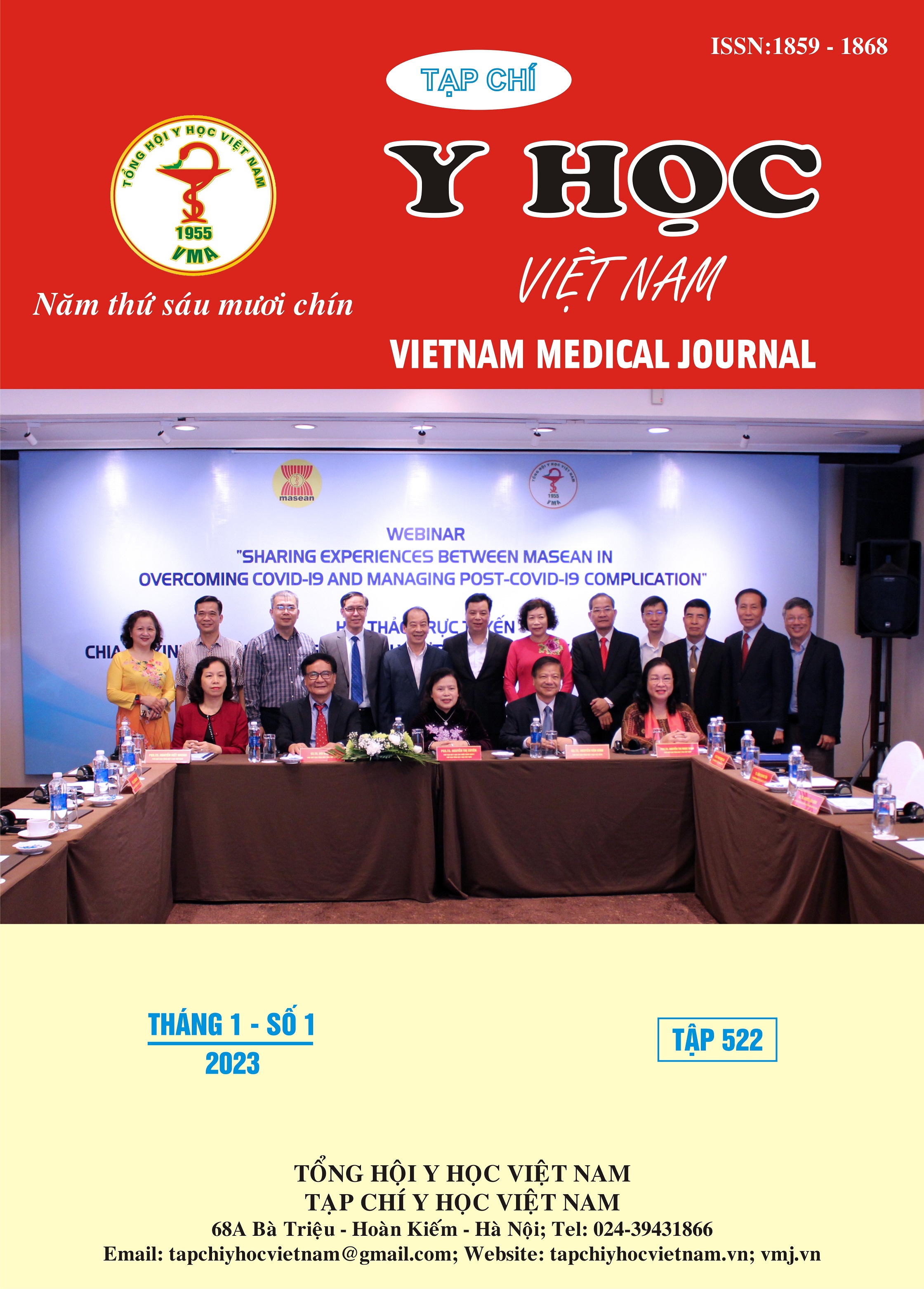ANTIBIOTIC RESISTANT AND GENETIC CHARACTERISTICS OF COLISTIN-RESISTANT GRAM-NAGATIVE BACTERIA ISOLATED FROM RETAIL CHICKEN AND PORK IN THAI BINH
Main Article Content
Abstract
The study was conducted to evaluate the antibiotic resistant and genetic characteristics of colistin-resistant Gram-negative bacteria isolated from retail chicken and pork in Thai Binh during the period 2018 - 2019. Forty-eight colistin-resistant Gram-negative strains (minimum inhibitory concentration MIC ≥ 4 mg/L) were evaluated for antibiotic sensitivity by diffusion disk method, detection of mcr genes by multiplex PCR and genetic relationship was also analysed by pulsed-field gel electrophoresis (PFGE) method. The results showed that colistin-resistant Gram-negative bacteria had relatively high rates of resistance to several antibiotics such as ampicillin, chloramphenicol, tetracycline, sulfamethoxazole - trimethoprim, nalidixic acid, but were still sensitive to fosfomycin, meropenem, ceftazidime and cefoxitin. The rate of multidrug resistance in colistin-resistant Gram-negative bacteria was 72.9%. The results also showed that 21 out of 48 strains (43.8%) carried the mcr-1 gene and no genes from mcr-2 to mcr-5 were detected. The proportion of chicken and pork samples contaminated with Gram-negative bacteria carrying the mcr-1 gene was 73.3% and 33.3%, respectively. The study results indicated that Gram-negative bacteria carrying mcr-1 gene frequently contaminated in retail chicken and pork in Thai Binh. Therefore, appropriate interventions should be implemented to prevent the emergence and spread of colistin-resistant Gram-negative bacteria in food, livestock and humans.
Article Details
Keywords
chicken, colistin resistant, mcr gene, pork
References
2. CLSI. Performance Standards for Antimicrobial Susceptibility Testing, 30th edition - M100, 2020.
3. Kawahara, R., Fujiya, Y., Yamaguchi, T., et al. (2019). Most Domestic Livestock Possess Colistin-Resistant Commensal Escherichia coli Harboring mcr in a Rural Community in Vietnam. Antimicrobial agents and chemotherapy, 63(6), e00594-19.
4. Liu, Y. Y., Wang, Y., Walsh, T. R., et al. (2016). Emergence of plasmid-mediated colistin resistance mechanism MCR-1 in animals and human beings in China: a microbiological and molecular biological study. The Lancet. Infectious diseases, 16(2), 161–168.
5. Magiorakos, A. P., Srinivasan, A., Carey, R. B., et al. (2012). Multidrug-resistant, extensively drug-resistant and pandrug-resistant bacteria: an international expert proposal for interim standard definitions for acquired resistance. Clinical microbiology and infection: the official publication of the European Society of Clinical Microbiology and Infectious Diseases, 18(3), 268–281.
6. Nakayama, T., Jinnai, M., Kawahara, R., et al. (2017). Frequent use of colistin-based drug treatment to eliminate extended-spectrum beta-lactamase-producing Escherichia coli in backyard chicken farms in Thai Binh Province, Vietnam. Tropical animal health and production, 49(1), 31–37.
7. Yamaguchi, T., Kawahara, R., Harada, K., et al. (2018). The presence of colistin resistance gene mcr-1 and -3 in ESBL producing Escherichia coli isolated from food in Ho Chi Minh City, Vietnam. FEMS microbiology letters, 365(11), 10.1093/femsle/fny100.
8. Yamamoto, Y., Kawahara, R., Fujiya, Y., et al. (2019). Wide dissemination of colistin-resistant Escherichia coli with the mobile resistance gene mcr in healthy residents in Vietnam. The Journal of antimicrobial chemotherapy, 74(2), 523–524.


